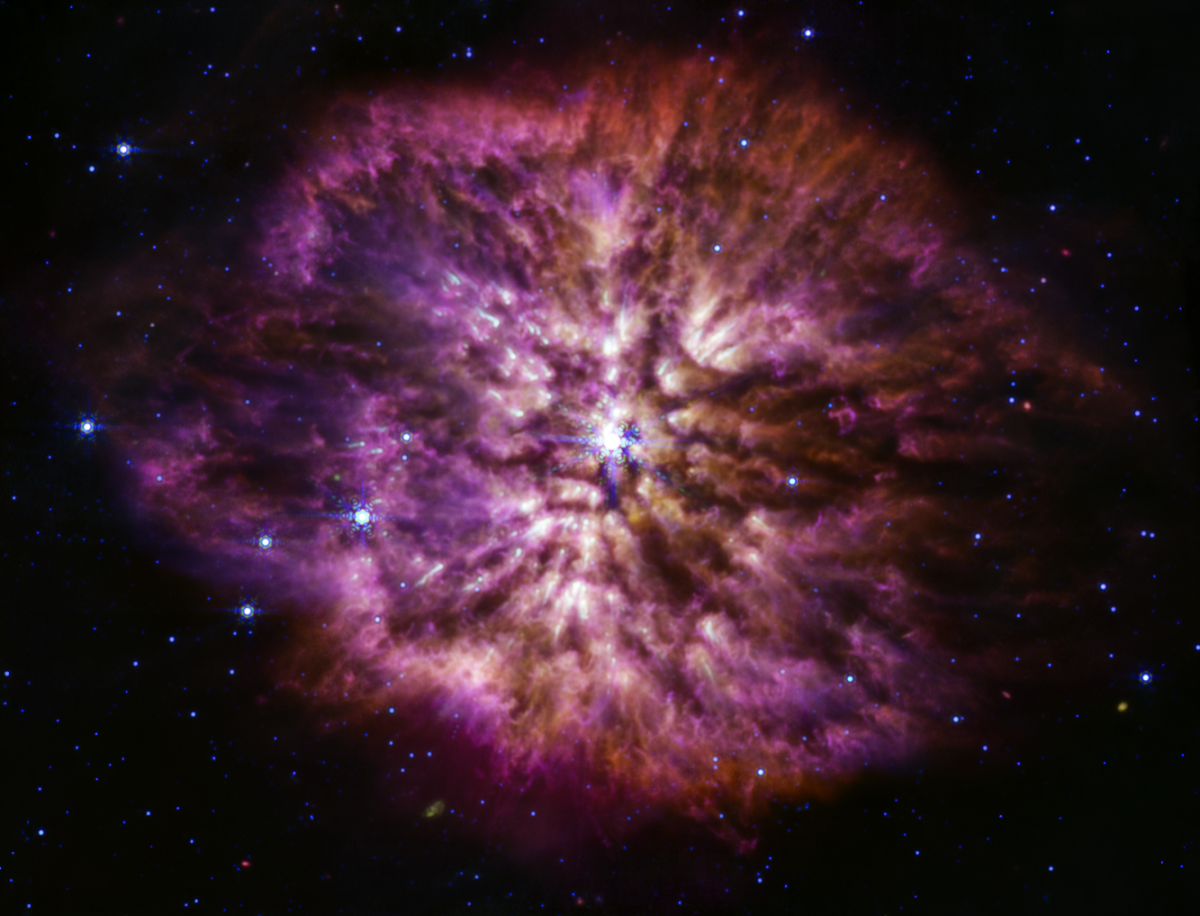Wolf–Rayet stars are rare, heterogeneous, spectrally unusual stars that show an extremely large presence of heavy elements on their surface, are completely hydrogen-free, and have strong stellar winds. They are massive and extremely hot compared to other stars, and are constantly spewing gas and dust around.
They are so rare that they are considered almost a “monster “legendary”, is also full of mystery.The latest studies show that this star form is actually a step in the evolution of supergiant stars, before becoming a supernova.

Spectacular and magical WR 124 in the image released by NASA on March 14 – Photo: NASA/ESA/CSA/STScl
According to the sheet Spacethe world’s most powerful space telescope James Webb (mainly operated by NASA, supported by the European-Canadian space agencies ESA and CSA) has found a clear and spectacular treasure in the constellation. Sagittarius.
In the latest images and clips that NASA has just released, the monster star is in the process of gradually removing their outer layers, so it is surrounded by the halos of gas and dust characteristic of this star form.
The new Wolf-Rayet star, named WR 124, is about 30 times larger than the Sun and has spewed a mass of dust and gas equivalent to 10 times the mass of the Sun into space to date.
The clip describes the journey of James Webb to discover the mysterious “cosmic monster” – Clip: NASA/SPACE
That phantom dust is precious to astronomers. “Dust is an integral part of cosmic activity. It shelters stars from forming, gathers together to help form, and serves as the basis for molecules to form and agglomerate, consists of molecules called the “building blocks of life” for Earth,” NASA wrote in the statement.
Therefore, observing a bright star, illuminating its dusty region will help NASA study a lot more about cosmic dust.
The shape of WR 124 also suggests that it is on the verge of becoming a brilliant supernova, the final explosion. Previous studies have suggested that ancient supernovas are likely to be the primary source of important materials for the formation of star systems like our own.








